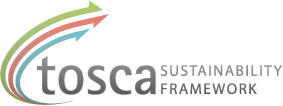Value chain activities
Navigation by keywords
Scientific state of the art on sustainable stakeholder management
In the scientific literature Kolk (2000) mentions two different definitions of stakeholders. Either, “any group or individual who can affect or is affected by the achievement of the organization’s objectives” (Freeman, 1984) or, “stakeholders are persons or groups that have, or claim ownership, rights, or interests in a corporation and its activities, past, present or future” (Clarkson, 1995). Further, Kolk (2000) describes how there are primary stakeholders (these stakeholders are needed by the firm in order to survive) and secondary stakeholders (these stakeholders are not essential for the firms survival but influence or are influenced by the firm and often also influence the primary stakeholders) (Clarkson, 1995). Primary stakeholders are explained to be: shareholders, investors, employees, customers, suppliers, governments and communities, whilst secondary stakeholders are: the media and activist groups (Kolk, 2000).
Another categorization of stakeholders is made by Ammenberg who describe how there are actors who influence the company’s; material resources, products, formal rights to act, informal rights to act, competences, financial resources as well as actors at micro level. Further, a study by Fineman and Clarke (1996) identified four groups of environmental stakeholders: 1) groups with care for the planet, 2) regulators and government, 3) stakeholders with explicit green interests and 4) internal stakeholders (referred in Harvey & Schaefer, 2001).
Both Kolk (2000) and Harvey and Schaefer (2001) describe the framework by Mitchell et al. (1997) with three aspects of stakeholder salience for managers: 1) perceived power, 2) estimated legitimacy and 3) perceived urgency. Stakeholder groups having all three attributes would then receive the most attention from managers and the least attention would be given to stakeholder groups having only one of these attributes. Also the way stakeholder groups interact and form networks is proposed to influence stakeholder attention from mangers (Rowley, 1997, referred in Harvey & Schaefer, 2001). Harvey and Schaefer (2001) found that the most immediate stakeholder groups with considerable power, legitimacy and urgency were the ones with regulatory connection. Other groups with considerable legitimacy and indirect power were customers and the public but as they lacked urgency they were often educated more than other groups. Employees were found to have legitimacy whilst shareholders and owners had power and legitimacy but lacked environmental interest. Media and some environmental pressure groups that were regarded as unfriendly and lacking legitimacy were sometimes found to be neglected or avoided.
Harvey and Schaefer (2001) also describe Freemans (1984) four steps of how to manage the stakeholder process: 1) identifying the relevant stakeholder groups, 2) determining the stake and importance of these stakeholder groups, 3) mapping out how the needs or expectations of these groups are currently being met by the company and, 4) adjust the corporate policies to take into account neglected stakeholder interests.
References
Ammenberg, J. (2004). Miljömanagement. Lund: Studentlitteratur.
Harvey, B. & Schaefer, A. (2001). Managing Relationships with Environmental Stakeholders: A Study of U.K. Water and Electricity Utilities. Journal of Business Ethics, 30(3), 243-260.
Kolk, A. (2000). Economics of Environmental Management. New York: Financial Times.

